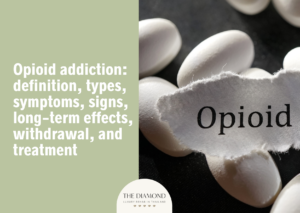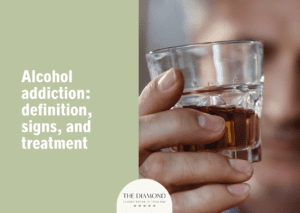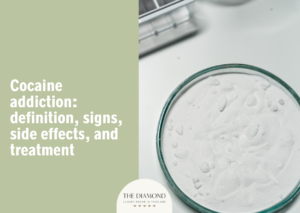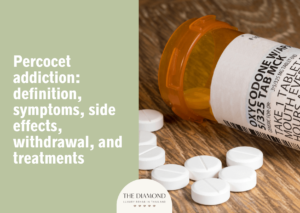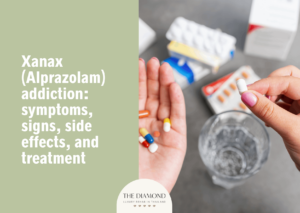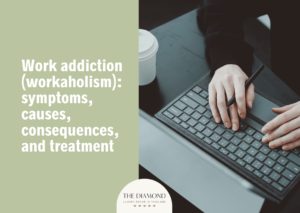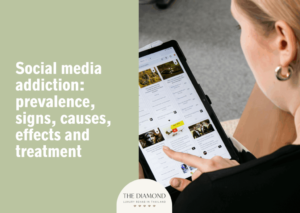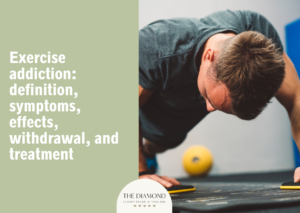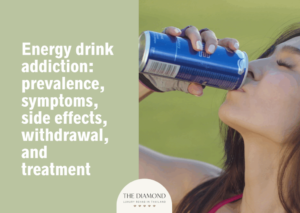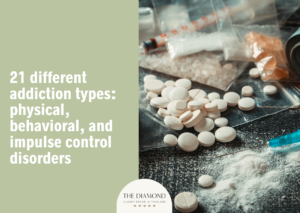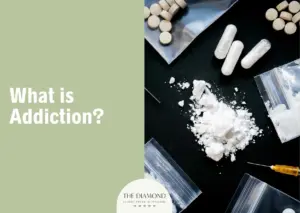What is rehab?
Table of content
- What is the definition of rehab?
- What is a rehab center?
- What are the types of rehab?
- Does rehab work?
- What is the process of rehab?
- What are the frequently asked questions about rehab?
- Do I need drug rehab?
- What happens if someone does not want to go to rehab?
- What is it like to attend drug rehabilitation?
- What is an example of rehab?
- What should I say to someone in rehab?
- Do people go to rehab for weed?
- How much do rehab centers cost?
- Who works in rehab centers?
- How long does rehab take?
- What addiction types are treated in rehab?
- Does insurance cover rehab?
- What can I bring to rehab?
- What comes after rehab?
- Can I work or go to school while in rehab?
- How do I choose the right rehab center?
- What kind of therapies are used in drug and alcohol rehab?
- Can family visit during rehab?
- What amenities are available in rehab centers?
- Can I use my phone or computer in rehab?
- What is the success rate of drug rehab?
- What makes rehab successful?

Rehab is an organized program specifically created to assist individuals in conquering substance dependence by providing medical treatment, therapy and support. Restorative health and the development of sustainable healthy habits are the primary goals of the approach.
A rehab center is an establishment offering therapeutic interventions and support services for individuals battling substance dependence. Individuals work with specialists in a safe environment to get their health back under control and resume normal daily functioning.
The types of rehab are inpatient rehab, outpatient rehab and 12-step programs.
The rehab process follows four main stages, namely assessment, detoxification, treatment and aftercare. Every phase ensures a unified approach to recovery by building upon the one before it. From stabilization to sustained, steady growth, the stages help patients navigate the process.
What is the definition of rehab?
The definition of rehab is a methodical procedure intended to assist individuals in overcoming substance abuse. Both the physical side effects of drugs and the emotional challenges associated with addiction are addressed by the medical and psychological care rehab provides.
Support in rehab often comes through therapy or medical care, guiding people through the hardest stages of withdrawal. The process works to restore a sense of control so daily life is no longer dictated by addiction.
Restoring functional abilities, such as paying attention to duties or fixing relationships, is the intended outcome of numerous programs. Recovery is rarely simple, so rehab provides steady guidance while people learn how to live without substances. The environment is meant to be supportive, giving patients a place where relapse is harder and progress feels possible.
What is a rehab center?
A rehab center is a dedicated facility where individuals participate in programs to get assistance with drug or alcohol abuse. The environment is organized, with established procedures minimizing disorder and fostering stability for patients.
Inside, therapy rooms, medical spaces and common areas are arranged to support both treatment and daily living. Patients spend time in individual sessions with counselors and in group settings where experiences are shared.
Medical staff are present to monitor health and manage withdrawal safely. Since addiction affects the body as much as the mind, centers blend medical oversight with therapeutic care. Numerous facilities additionally teach practical skills, such as managing stress or rebuilding relationships to prepare people for life outside the program.
What are the types of rehab?

Types of rehab describe the several therapy modalities accessible to assist individuals in recovery from substance use problems. The types of rehab are listed below.
- Inpatient rehab
- Outpatient rehab
- 12-step programs
1. Inpatient rehab
Inpatient rehab is a treatment method necessitating clients to reside within a facility while addressing substance use disorders. The regulated setting eliminates external distractions and diminishes exposure to relapse-inducing stimuli.
Care is available 24/7, with medical staff monitoring withdrawal symptoms and counselors guiding therapy sessions throughout the day. Such a level of attention is recommended for people dealing with severe addictions or repeated failed attempts at sobriety.
Staying on-site helps restore balance, discipline and focus while progress is closely supported. The length of time in treatment varies, but the intensive setup allows patients to strengthen coping skills before returning to everyday life.
2. Outpatient rehab
Outpatient rehab is a form of rehabilitation treatment where individuals are able to continue with regular activities and duties at home while attending scheduled therapy sessions and medical appointments.
Patients in outpatient rehabilitation do not remain in a facility full-time, allowing them to keep up with work, studies or family duties during recovery. The flexible setup suits individuals with mild to moderate addictions or people stepping down after completing an inpatient program.
Support remains steady, delivered through scheduled sessions instead of 24/7 care. Outpatient rehab programs establish schedules fitting around patients’ work or school hours, thereby minimizing the disruption of daily routines. Attending such programs enables patients to apply coping strategies in real-world scenarios while receiving professional guidance.
3. 12-step programs
12-step programs are a structured approach to recovery from addiction, compulsive behaviors and other psychological issues, originally developed by Alcoholics Anonymous (AA) and now widely adopted by various support groups. These programs are based on a set of guiding principles outlined in twelve sequential steps.
The steps focus on self-reflection, acceptance of past mistakes, making amends and building a stronger sense of purpose. Meetings are usually held in community spaces where participants share experiences, provide mutual encouragement and work through the steps together.
Participation is voluntary, and people are free to move through the steps at their own pace. With a long history and broad accessibility, 12-step programs remain among the most widely available recovery supports worldwide.
A 2020 paper by Angela J. Nash, called “The Twelve Steps and Adolescent Recovery: A Concise Review” indicated 12-step organizations encourage pro-recovery networks and provide affordable, easily accessible help to combat lifestyles centered around alcohol and other drugs (AODs). 12-step facilitation reduces the risks to adolescent brain development and the expenses associated with adult addiction as well.
Does rehab work?
Yes, rehab works because it provides a setting that encourages long-term recovery for people battling substance abuse. Rehabilitation addresses mental and physical health issues simultaneously through a combination of medical treatment, therapy and peer involvement.
Patients are able to focus on recovery without continual distractions due to the setting’s limitation of exposure to triggers. Integration of interventions treats psychological and physical aspects together, breaking dependency and promoting wellness.The approach builds motivation, healthy habits and resilience, helping individuals manage stress and lower relapse risk, according to a 2024 paper by Theodorakis et al., titled “Enhancing Substance Use Disorder Recovery through Integrated Physical Activity and Behavioral Interventions: A Comprehensive Approach to Treatment and Prevention.”
How does rehab work?
Rehab works by offering a secure and encouraging environment for individuals to quit using drugs under the guidance of qualified experts. Instead of facing recovery alone, patients enter a community built around accountability and support.
Daily schedules are structured to replace the unpredictability of drug or alcohol use with routines promoting stability, offering a clear view of how rehab works in practice. The new way of living and sense of belonging both strengthen motivation to stay committed.
What is the process of rehab?

The process of rehab involves four key stages: initial assessment, detoxification, a comprehensive treatment phase and aftercare with continued support. The first stage, assessment, allows professionals to understand a person’s history, the severity of substance use and any mental health concerns potentially affecting recovery.
The collected information establishes the basis for a personalized plan customized to the individual’s requirements. The second stage, detoxification, emphasizes the removal of chemicals from the body under monitoring to assure safety and mitigate withdrawal concerns.
Once stabilized, patients enter the treatment phase where therapy, education and skills training address deeper issues linked to drug abuse. In order to replace unhealthy habits with more beneficial ones, the rehab process moves on with structured support. After treatment, aftercare planning ensures patients gain access to resources, ongoing counseling or support groups after transitioning back to daily life.
What are the frequently asked questions about rehab?
Frequently asked questions about rehab refer to a compilation of common inquiries related to rehabilitation programs and processes. The most frequently asked questions about rehab are listed below.
- Do I need drug rehab?
- What happens if someone does not want to go to rehab?
- What is it like to attend rehab?
- What is an example of rehab?
- What should I say to someone in rehab?
- Do people go to rehab for weed?
- How much do rehab centers cost?
- Who works in rehab centers?
- How long does rehab take?
Do I need drug rehab?
Yes, you need drug rehab if substance use has begun interfering with daily responsibilities or personal well-being. Deciding on treatment feels difficult because recognizing the line between casual use and dependency is not always straightforward.
Warning signs appear once health, work or relationships start to suffer as a result of continued use. Acting early helps reduce long-term damage while opening the door to healthier habits. Drug rehab delivers guidance, accountability and support to strengthen recovery.
What happens if someone does not want to go to rehab?
If someone does not want to go to rehab, the cycle of substance use often continues without interruption. Family members and friends feel helpless as the situation worsens, especially if health or safety becomes compromised.
Certain individuals deny the seriousness of the problem or fear the changes rehab requires. In such cases, loved ones sometimes organize interventions or encourage counseling to break through denial. If reluctance persists, external pressures such as legal consequences lead someone to accept help.
What is it like to attend drug rehabilitation?
People tend to feel curious about daily life in treatment, wondering if the experience feels restrictive or supportive. In reality, most centers combine scheduled therapy sessions with activities designed to strengthen coping skills and resilience.
A typical day usually starts with a set routine such as morning check-ins or group discussions. Afternoons involve individual counseling or wellness activities, followed by quiet time in the evening for reflection and rest.
Daily structure like this fosters consistency while helping patients focus on long-term goals. Addiction recovery becomes the guiding theme, with each activity aimed at building confidence and healthier patterns. Group work and education sessions highlight relapse prevention, teaching practical ways to handle triggers outside the facility.
What is an example of rehab?
An example of rehab is a residential treatment facility, where individuals live on-site and receive 24/7 care while focusing solely on recovery. Such facilities separate people from everyday pressures, creating space to rebuild healthier routines and behaviors.
Non-residential treatment exists as well, offering therapy and counseling on scheduled visits without requiring an overnight stay. Both settings represent distinct approaches to addressing drug abuse. A residential treatment program, in particular, gives participants the benefit of continuous support and a safe place to practice new skills before returning to normal life.
What should I say to someone in rehab?
When thinking about what to say, the goal is to express support without adding pressure. Words of support help people in rehab feel understood and less isolated during such a challenging time.
Simple phrases such as asking, “Is there anything I can do to make this easier for you?” show willingness to help in a respectful way. Expressing sentiments like “Seeing the steps you’re taking inspires me” communicates pride in progress without sounding forced. Another helpful approach is to say, “You are not going through this alone, I’m beside you,” reinforcing emotional presence.
Friends and family tend to worry about saying the wrong thing or unintentionally creating stress. The most helpful approach usually involves offering encouragement and showing patience. Clear support reassures the person in recovery of not having to face the journey alone.
Do people go to rehab for weed?
Yes, people do go to rehab for weed, especially when use has grown beyond casual habits and begun interfering with daily life. Although cannabis is often viewed as a casual drug, frequent use carries the potential to create dependence, becoming difficult to manage alone.
Rehab for weed offers a space for individuals to understand the effects of long-term cannabis use while developing healthier coping methods. Programs include therapy, counseling and education designed to break patterns keeping people locked in cycles of use.
Marijuana addiction is real, and while withdrawal symptoms are not as intense as symptoms linked to alcohol or opioids, the effects still disrupt sleep, mood, and motivation. Cannabis rehab helps manage both the physical discomfort of withdrawal and the psychological pull to continue using.
How much do rehab centers cost?
The cost of rehab centers varies widely based on the type of treatment program, the duration of stay, the location of the facility and the level of care provided. Inpatient rehab programs, offering 24-hour care and a comprehensive range of services, typically range from $6,000 to $30,000 for a 30-day program, with high-end facilities charging much more.
Outpatient rehab programs are generally less expensive, costing between $5,000 and $10,000 for a three-month program.
Rehab cost is often a major concern for families, but numerous centers provide payment plans or financial assistance. Health insurance sometimes helps cover part of the expense, reducing the financial burden.
Who works in rehab centers?
Doctors, nurses, therapists, counselors, social workers, psychologists, addiction specialists, support staff and cooks all work in rehab centers. Doctors provide medical oversight and treat health conditions tied to substance use.
During the stay, nurses give hands-on care, keep an eye on vital signs and manage medications. In order to address the processes contributing to drug use and teach better coping mechanisms, therapists lead behavioral therapy.
Counselors help clients set personal goals and come up with ways to avoid relapsing as well as offer emotional support. Social workers and psychologists help with family problems, mental health issues and getting back into the community following treatment.
Addiction specialists know how to handle withdrawal symptoms and help with recovery strategies for the future. Lastly, balanced and nutritious meals from cooks restore vigor and well-being.
How long does rehab take?
Rehab takes about 30, 60 or 90 days depending on the individual’s needs and progress. A 30-day program gives people a short but focused start on recovery, serving as an introduction to therapy and healthy routines.
Certain individuals view a month-long stay as useful for building initial motivation, though more severe cases require extended care. A 60-day stay allows additional time for deeper counseling, skill development, and stronger adjustments to sober living.
For people facing long histories of substance abuse, a 90-day program provides the most thorough approach, offering a chance to reinforce new behaviors and reduce relapse risk. Longer stays give more time to practice coping strategies in a safe environment before returning to daily life.
The appropriate duration depends on the severity of addiction, support systems at home and progress made during treatment. Choosing between 30, 60 or 90 days ensures rehab matches personal circumstances and recovery goals.
What addiction types are treated in rehab?
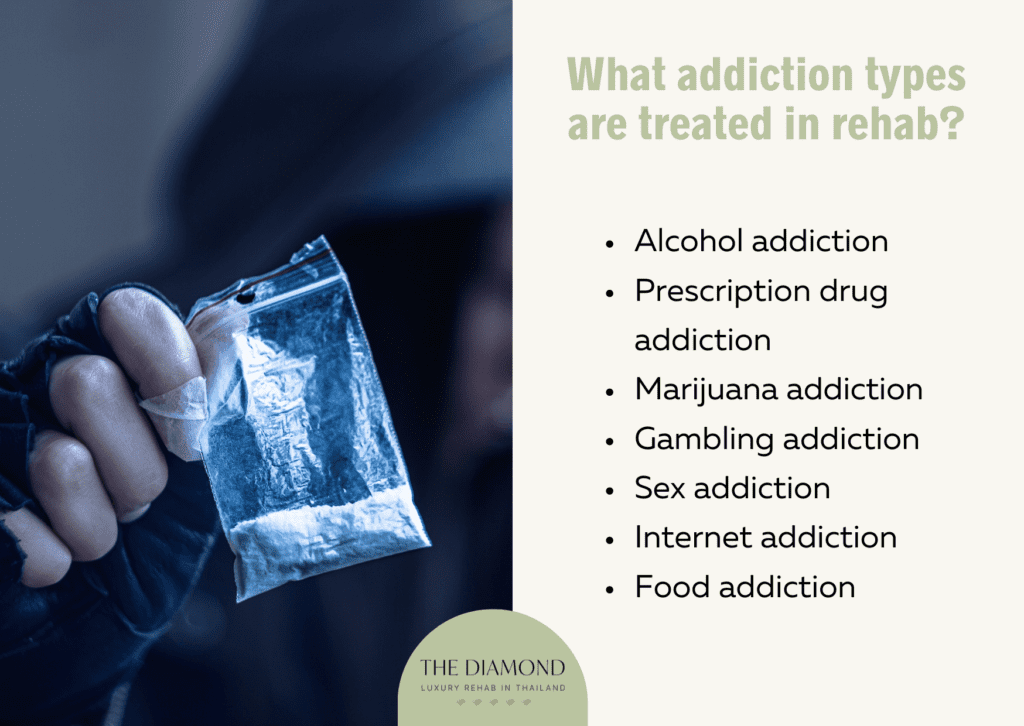
Addiction types treated in rehab refer to the various forms of substance use disorders and behavioral addictions rehabilitation programs address. The addiction types treated in rehab are listed below.
- Alcohol addiction: Alcohol addiction develops when drinking shifts from casual use to a compulsive need disrupting health and relationships. Dependence leads to higher tolerance, requiring larger amounts to achieve the same effect. Withdrawal brings challenges like tremors, irritability and anxiety, making quitting difficult without guidance.
- Prescription drug addiction: Medications prescribed for pain relief or anxiety sometimes cause dependence when taken beyond medical advice. Prescription drug addiction alters brain chemistry, leading to cravings difficult to manage without support. People struggling with the issue face dangerous withdrawal symptoms if attempts to quit are done abruptly.
- Marijuana addiction: Frequent cannabis use develops into one of the addiction types called marijuana addiction. People affected notice a growing reliance on the substance to relax or cope with stress. Motivation and focus eventually decline, creating challenges in personal and professional life. The most common reasons for cannabis use among college students and young adults are to conform to social norms (42%), experiment (29%) and for “enjoyment” (24%), according to a continuing education activity by Jason Patel and Raman Marwaha titled “Cannabis Use Disorder,” last updated in March 2024.
- Gambling addiction: Unlike substance use, gambling addiction is behavioral, but the pull is just as strong. Constant betting triggers the brain’s reward system, reinforcing risky decisions leading to financial stress and emotional strain. Individuals affected frequently hide losses, worsening isolation and shame. Rehab teaches healthier coping skills and provides accountability to reduce destructive patterns.
- Sex addiction: Individuals with sex addiction struggle with obsessive sexual thoughts, behaviors and an inability to control sexual impulses. Therapy for mental health, behavioral interventions to manage compulsions and support groups for shared learning and coping form the core of rehabilitation treatment.
- Internet addiction: Excessive screen time becomes harmful when online activities interfere with personal responsibilities. Internet addiction leads to disrupted sleep, reduced productivity and growing disconnection from real-life interactions. People experiencing the issue struggle to limit use despite wanting balance. Inpatient treatment centers offer modalities like therapeutic programming, crisis intervention, medication management and digital detoxification in severe cases of internet addiction, according to a 2024 study by Chadha et al., titled “Internet Addiction Management: A Comprehensive Review of Clinical Interventions and Modalities.”
- Food addiction: Eating for comfort rather than nourishment results in loss of control over portions or frequent bingeing. Food addiction fuels cycles of guilt, shame and physical discomfort while raising health risks like obesity and diabetes. Cravings become tied to emotions, making moderation extremely difficult. Rehab treatment includes nutritional guidance, therapy and building sustainable lifestyle changes.
Does insurance cover rehab?
Yes, insurance covers rehab, but the level of coverage depends on the plan and type of program. Employer-provided policies, Affordable Care Act (ACA) marketplace plans and government programs like Medicaid and Medicare generally include addiction and mental health treatment.
A 2020 study by Mojtabai et al., titled “Private health insurance coverage of drug use disorder treatment: 2005–2018” revealed 37.6% of privately insured individuals with drug use disorders did not know if treatment was covered, with little change before (2005–2013) and after (2014–2018) the ACA.
Higher treatment rates were linked to coverage in a number of contexts, including emergency rooms, mental health centers, inpatient, residential rehabilitation centers, outpatient specialty settings and physician offices.
Another study by Feder et al., titled “Health Insurance Coverage is Associated with Access to Substance Use Treatment Among Individuals with Injection Drug Use: Evidence from a 12-year Prospective Study” published in 2018 showed insurance coverage among people with injection drug use rose from 65% in 2006 to 98% in 2017, largely due to the Maryland Primary Adult Care (PAC) program and Medicaid expansion under the ACA.
Medicaid and Medicare strongly improved treatment access, while private insurance showed limited impact on specialty care but improved access to buprenorphine and consistent medical services.
What can I bring to rehab?
You can bring personal items supporting your comfort and daily needs during the stay to rehab. Clothing, toiletries and prescription medications in original containers are usually allowed after staff review. Most facilities recommend keeping belongings simple, avoiding valuables or excess items.
Books, journals or small personal reminders are permitted as long as they do not interfere with treatment. Electronics like phones or laptops additionally have restrictions depending on program rules. Food and drinks from outside are usually discouraged to maintain health standards and prevent hidden substances.
Certain facilities provide a packing checklist before admission to guide patients in preparing properly. The focus is on creating a safe, distraction-free space, so prohibited items include drugs, alcohol or anything considered unsafe. Having familiar items, like photos or comfortable clothing, helps ease the transition into rehab.
What comes after rehab?
What comes after rehab depends largely on the individual’s discharge plan and how recovery continues outside treatment. An aftercare plan is usually developed before leaving the program, outlining steps for ongoing accountability and relapse prevention.
The plan often involves counseling, peer groups and medical follow-ups to support continued progress. A large number of people return home as the preferred option, while others transition into a sober living facility offering structure and community.
Alcoholics Anonymous (AA) and Narcotics Anonymous (NA) help people stay connected to recovery by offering ongoing support and services through peer-led meetings. Certain discharge plans recommend lifestyle changes as well, such as healthier routines, new hobbies or career adjustments.
Reintegrating into everyday life requires establishing a network of loved ones and recovery peers. Such components lessen the likelihood of setbacks while preparing someone to return to normal life. Recovery doesn’t stop when rehab ends; the process keeps going through daily choices and a commitment to growing as a person.
Can I work or go to school while in rehab?
Yes, you can work or go to school while in rehab, but it depends on the type of program chosen. Inpatient treatment usually requires full-time commitment, leaving little room for outside responsibilities.
Outpatient programs, however, are designed with flexibility, allowing participants to attend therapy sessions while managing work or education. Certain facilities even coordinate schedules around professional or academic commitments. The option selected must match the severity of substance use and the level of care required.
Trying to balance too much at once increases stress, so treatment teams regularly guide patients in setting realistic expectations. Outpatient rehab allows individuals to maintain daily routines while still receiving consistent care. In contrast, inpatient programs immerse individuals in recovery without distractions.
A 2018 paper by Finch et al., called “Recovery High Schools: Effect of Schools Supporting Recovery from Substance Use Disorders” looked at how well Recovery High Schools (RHSs) help teenagers with substance use disorders (SUDs) after completing treatment.
For youth with SUDs, RHSs offer recovery assistance and post-treatment education. The findings indicated attending RHS made a big difference in numerous substance use outcomes after six months.
Reports of total abstinence from alcohol, marijuana and other drugs were more than four times more common among adolescents in RHSs. Overall, the study suggested RHSs fill a crucial void in aiding rehabilitation and advancing learning among young people impacted by SUDs.
How do I choose the right rehab center?

In choosing the right rehab center, start by researching institutions specializing in the type of addiction treatment you need. Look for accreditations and certifications, as these indicate the program meets recognized standards of quality and safety.
Check the range of therapies offered and whether the rehab facility provides both medical and psychological care. Location matters, so decide if staying close to home or seeking treatment elsewhere is going to be more beneficial.
Compare the length of programs available, such as short-term or extended stays. Review staff qualifications to ensure experienced professionals are guiding the recovery process. Asking about aftercare support is vital as well, since continuing care plays a major role in lasting sobriety.
Determine whether the environment and amenities are conducive to personal motivation and comfort. Review insurance coverage or available payment plans to handle rehab expenses effectively. Lastly, communicate directly with rehab centers to gain a clear understanding of the approach and confirm it suits individual needs.
What kind of therapies are used in drug and alcohol rehab?
The kind of therapies used in drug and alcohol rehab include cognitive behavioral therapy (CBT), individual counseling, group therapy, family therapy and holistic therapies.
To help people recognize and alter unhelpful ways of thinking and behaving, cognitive behavioral therapy (CBT) is a widely used approach. Rehabs apply various types of cognitive behavioral therapy, such as rational emotive behavior therapy (REBT) to challenge illogical beliefs and dialectical behavior therapy (DBT) to strengthen emotional regulation and mindfulness.
Individual counseling provides one-on-one sessions with a therapist, allowing for personalized care. Patients get to share experiences and learn from others going through similar struggles in the supportive setting of group therapy.Family therapy is likewise essential since the method addresses dynamics, creates a supportive home atmosphere and includes loved ones in the healing process. Holistic therapies such as yoga, meditation and art therapy are often included as part of a comprehensive plan as well, to promote overall well-being and stress management.
Can family visit during rehab?
Yes, family can visit during rehab, but the timing and structure of family visits depend on the program’s rules. Rehab centers often set guidelines to ensure visits support the recovery process rather than cause disruption.
Family visits are considered crucial because interactions with loved ones strengthen emotional connections and show patients they are not alone throughout the recovery journey. Numerous facilities schedule specific visiting hours to maintain a balance between treatment needs and personal support.
Certain programs include structured family sessions where loved ones learn about addiction and recovery. Such sessions enhance communication and foster better dynamics within the household. Rehab staff prepare families beforehand to ensure visits are constructive and positive.
What amenities are available in rehab centers?
Amenities like private or semi-private rooms, fitness centers, swimming pools, sports facilities, therapy rooms, nutritious meals, recreational spaces, access to nature and areas for relaxation and reflection are available in rehab centers.
Private or semi-private rooms provide a comfortable and personal environment supporting healing. Fitness facilities, swimming pools and sports areas encourage movement, helping strengthen the body while easing tension.
Counseling in dedicated therapy rooms helps patients explore challenges and build healthier coping skills. Nutritious meals are prepared to support physical health and restore energy levels lost to substance use. Access to nature, such as gardens or walking paths, provides a peaceful backdrop supporting emotional balance.
Recreational spaces allow patients to relax, engage in hobbies or spend downtime in a positive way. Quiet areas designed for reflection give individuals a chance to process experiences and build focus for the journey ahead.
Can I use my phone or computer in rehab?

No, you cannot use your phone or computer in rehab, especially during the early stages of treatment. Upon entering the facility, staff usually collects all electronics and holds the devices for a specific period until the patient is ready to have access again.
Most facilities limit electronics to reduce distractions and help patients focus fully on recovery. Without constant access to devices, individuals are able to engage more deeply in therapy and group sessions. Removing phones and computers additionally minimizes outside stress and prevents triggers linked to social media or work.
Certain rehab programs permit limited use of electronics, though access remains heavily restricted and closely monitored. Policies differ, so asking about specific rules before admission helps prevent unexpected issues.
What is the success rate of drug rehab?
The success rate of drug rehab indicated a 36% abstinence rate, consistent with regional findings but difficult to compare widely due to limited past research, a 2016 study by Frimpong et al., called “Abstinence at Successful Discharge in Publicly Funded Addiction Health Services” revealed.
Patients aged 50 and above showed 35% higher odds of abstinence than people aged 18–28. Younger patients did achieve positive outcomes, though results suggest maturity and life experience improve recovery commitment. Such findings support earlier research linking older age with stronger treatment success.
According to a 2024 publication from the Substance Abuse and Mental Health Services Administration, titled “Key Substance Use and Mental Health Indicators in the United States: Results from the 2023 National Survey on Drug Use and Health,” 14.6 percent, or 7.1 million persons, had substance use treatment in the previous year out of the 48.5 million individuals aged 12 or older in 2023 who had an SUD and were thus deemed to require substance use treatment.
As the severity of SUD grew, so did the percentages of patients who had received substance use treatment in the previous 12 months. In particular, individuals with a mild SUD within the year prior had the lowest likelihood of receiving substance use treatment during the period (7.8%, or 2.1 million people).
Additionally, receiving substance use treatment in the previous year was lower among people with moderate SUD (13.6 percent, or 1.5 million individuals) than for patients with severe SUD (33.2 percent, or 3.5 million people).
What makes rehab successful?
Rehab is successful when treatment addresses both the physical and emotional aspects of addiction. Personalized care plans tailored to individual needs greatly improve the chances of success.
Programs combining medical care with psychological support often achieve greater success by targeting both the physical and emotional sides of addiction. A structured daily routine strengthens healthy habits while limiting idle time likely to trigger relapse.
Involving family strengthens one’s support network by fostering accountability and encouragement. Peer groups further create a sense of belonging and offer shared wisdom, reassuring participants the process is not endured alone. Finally, aftercare planning ensures the transition back into regular routines is smoother and relapse risk remains lower.



